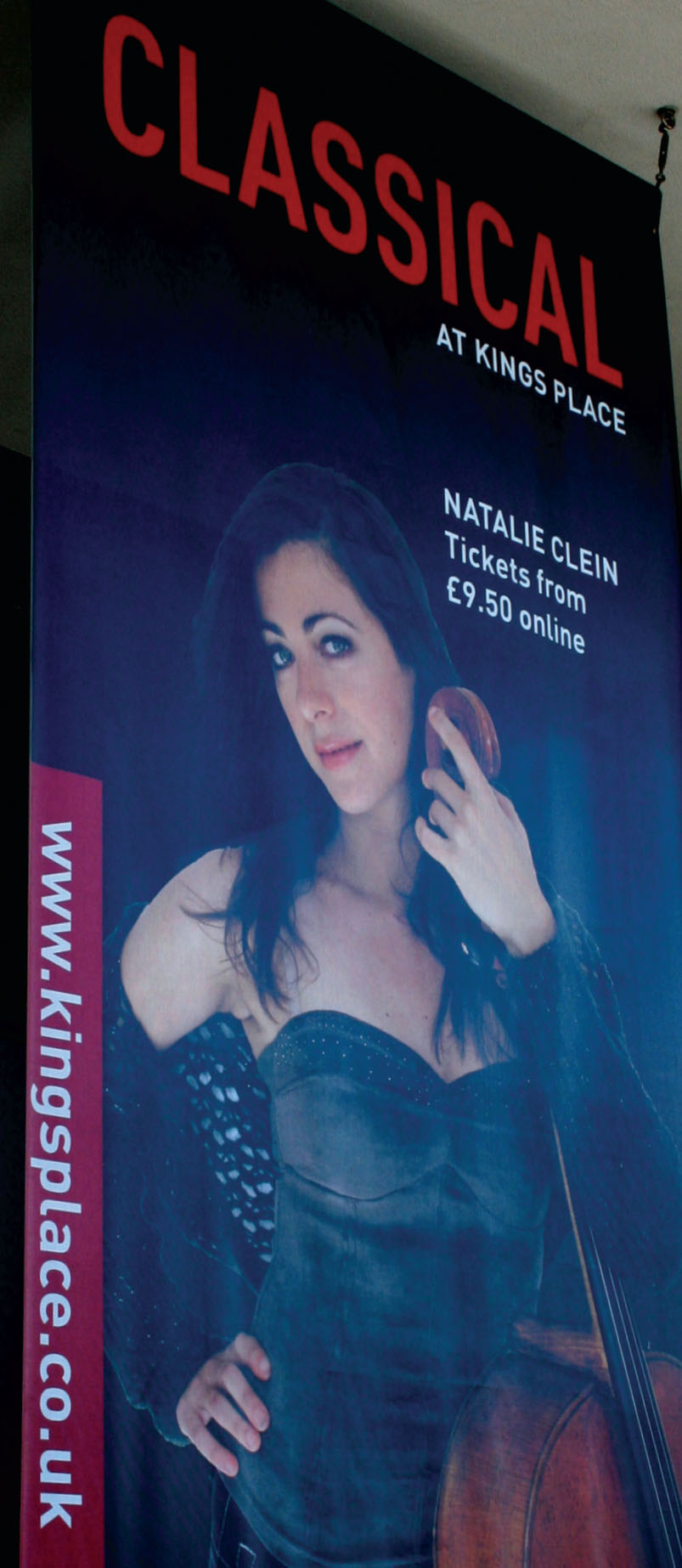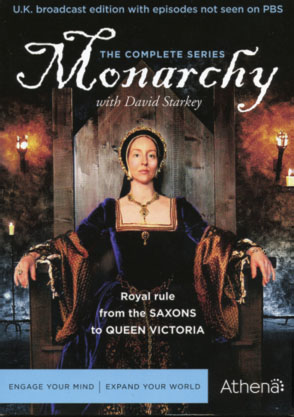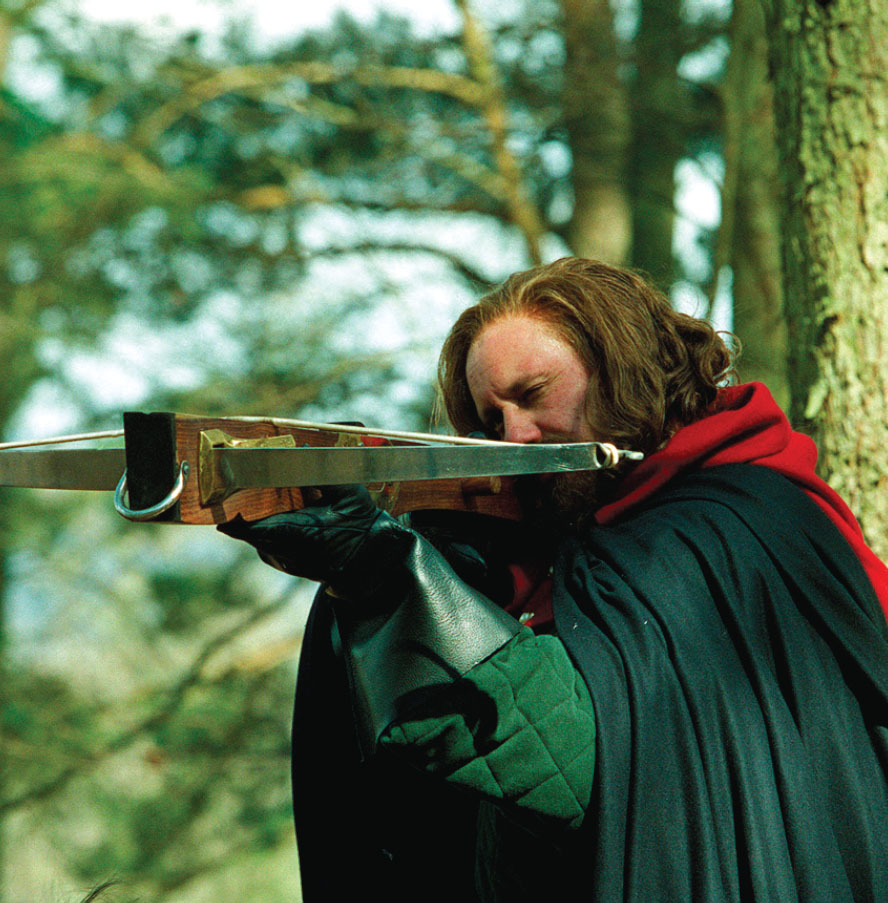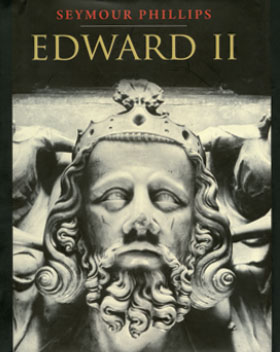
OVER THE YEARS it has been a train scheduled to depart King’s Cross or St. Pancras stations that has brought my husband and me to this part of London. For the last dozen years it has also been the British Library, built to house the collection previously located within the British Museum in Bloomsbury, which has enticed us here with its changing exhibitions and poetry readings. But since 2008 we have been happily lured to the area by Kings Place, which is the first new music venue built from scratch in London since the Barbican Hall was opened in 1982.
As you walk up York Way, alongside King’s Cross station, the building emerges at the end of the road as a pleasant surprise. York Way is a bustling, bland street with dreary warehouses and drab office buildings, but then you catch sight of the glistening new structure that houses the offices of The Guardian newspaper. It is also the home of Kings Place, an arts center that focuses on music, art and the written word. Just beyond the building is the Regent’s Canal which offers a sense of peace and tranquility and sets the mood for the music and art within.
Kings Place has two concert halls. Hall One has a shoebox, or double cube shape, a raked stage, and fixed seating for 420 people. It is a superb venue for chamber music, and the London Chamber Music Society, one of its resident groups, www.londonchambermusic.org.uk), performs on Sunday evenings during the season.
The hall’s outstanding acoustics are partly due to the tall columns regularly spaced away from the walls in the upper part of the room. Its interior is lined with oak from a single German 500-year-old tree that provides more than an acre of veneer. Hall Two, a smaller space, is often used for rehearsals as well as live performances, and its flexible seating can be arranged in the round or other formations.
As you enter from the street, Kings Place’s bright, airy central atrium welcomes one and all whether you have a ticket to a concert or not. Even those who do not like classical music will want to check out the many free events that are held throughout the year in the atrium space, as well as the available restaurants. Inexpensive food and refreshments are served cafeteria style throughout the day at the Green and Fortune Café. For something more upscale, the Rotunda Restaurant, with floor-to-ceiling windows facing the picturesque Regent’s Canal, offers a fancier setting and complete meals either inside or on its terrace.
[caption id="KingsPlaceLondonsNewestConcertHallsEatdrinkandbemerry_img1" align="aligncenter" width="1024"]

DANA HUNTLEY
From the atrium, walk up to the Kings Place Gallery with its free changing art exhibitions. The Gallery has also placed art works in various public spaces including the Gallery Level, Concert Level and North Balcony so that even when its doors are closed the public can enjoy its selections.
This part of London is quickly being gentrified. A perfect visit would include time to view the Battlebridge Basin on the Regent’s Canal with its many beautifully painted houseboats before entering Kings Place. A pleasant way to spend a free hour is to stroll along the flat towpath from the Battlebridge Basin all the way to Regent’s Park. Plan to attend a performance at Kings Place and look at the schedule of upcoming events and ticket availability at www.kingsplace.co.uk or enjoy the art works scattered around its public areas.
Afterwards, linger at Kings Place for food and drink, or stroll to the corner of Swinton Street and Gray’s Inn Road about five minutes away for a meal at the Acorn House Restaurant. This fairly new eco-friendly restaurant offers superb seasonal menus in an attractive, comfortable setting with attentive service.
These days we are still taking trains at King’s Cross station to places beyond London, but there are more and more reasons to come and linger in this area. The British Library, Kings Place and new neighborhood restaurants head the list.
—Jennifer Dorn
[caption id="KingsPlaceLondonsNewestConcertHallsEatdrinkandbemerry_img2" align="aligncenter" width="802"]

CONSIDER YOURSELF fairly warned: before opening this book, have a snack.
Claire Hopley’s newest book is sure to cause a pavlovian response with its mouth-watering recipes and beautiful scenes of the Christmases of yesteryear. This book isn’t just for foodies either—the literature lover will take great pleasure in Christmases written about by Charles Dickens and Jane Austen, Washington Irving and J.K. Rowling.
The evolution of Christmas celebration starts with combining Roman, pagan and Christian holidays and feasting on fowl so wildly stuffed that it makes the ever-so-popular turducken a sad attempt at extravagance. It ends with the chaotic melding of tradition and nuance with a dusting of anxiety that is Christmas today.
[caption id="KingsPlaceLondonsNewestConcertHallsEatdrinkandbemerry_img3" align="aligncenter" width="803"]

Never mind religion, which has, ironically, caused the holiday trouble from the get-go, Hopley focuses more on how the Christmas feast is telling of the times. From noble feasts and wassailing of medieval days to turkey curry buffets and hurrahbah humbug of today, the food tells the story of economic and cultural tides better than gift-giving can.
Medieval slaughters that saved livestock from starving during lean winters gave peasants and nobility alike abundant quantities of fresh meat, a treat that no other time of year could offer. When World War II rationing led to scrimping, saving and substitutions, and despite the less than favorable supply of basic foods, Christmas went off without a hitch every year, as new, communal and creative ways of preparing food became popular.
With 40 recipes throughout the book highlighting dishes from years gone by (adjusted to be suitable for today’s palate, of course), you might get ideas for your next Christmas feast. Think of it: eating like a king on Christmas day with the family around the table. What could be a more appropriate salute to the tradition of Christmas than Syrian Chicken in White Wine and Almond Sauce with Pomegranate Seeds, as they would have eaten in the court at Camelot, the same Lemon Mincemeat Jane Austen would have enjoyed, Brie Tart from the old mystery plays and Brussels sprouts, followed by an evening by the fire with a piping hot mug of Robert Herrick’s Lamb’s Wool with the family.
BOOKS
The History of Christmas Food and Feasts
by Claire Hopley, Pen and Sword Books, Barnsley, 224 pages, hardcover, £25.
[caption id="KingsPlaceLondonsNewestConcertHallsEatdrinkandbemerry_img4" align="alignright" width="265"]

To ease the hunger pangs that haunt the pages, Hopley has included the festivities that have accompanied the mounds of food during the Christmas holidays (remembering, of course, that Christmas has never been just one day). From games and game hunting, mumming and mystery plays Christmas has been a time to break down social barriers and enjoy life. Although sometimes these activities became unruly to the point where they were outlawed, good traditions never really disappear. With Christmas oriented toward children these days, some of the drunken rowdiness of the holiday has been tamed, but plays, games and openhearted giving have stuck it out.
In your hurry to get to another meal, don’t miss the book’s brightly colored pictures. Each captures the Christmas spirit, dressing up the bleak grays and whites of the outdoors with splashes of warmth.
Without becoming too sentimental, this book did for me what the ghosts of Christmas past, present and future did for Ebenezer Scrooge. I shall try to remember that Christmas is about celebrating, not about getting into rows over electronic toys in the shops. And I shall remember that my growing waistline is a sign of good health during a leaner time of year, or at least it means I’m enjoying the season.
—Megan Wiseman
The story of British monarchy
DVDS
Monarchy: The Complete Series,
5-disc boxed set, Acorn Media, Silver Spring, Md., 16 episodes, app. 776 minutes, $79.99.
[caption id="KingsPlaceLondonsNewestConcertHallsEatdrinkandbemerry_img5" align="alignright" width="294"]

THE COMPLETE SERIES, indeed. Eminent historian David Starkey tells the epic story of Britain’s royal history from Celtic kings to Her Majesty the Queen. For more than a millennium, the monarchy has survived brutality, betrayal and bloodshed to become the oldest surviving political institution in Europe.
Filmed on location at historical sites across the island and studded with dramatic storytelling and recreations, the series presents a unified picture of Britain’s transformation from the authoritarian rule of early kings to the reign by consent of the governed that characterizes the unique constitutional monarchy of today.
Starkey is a familiar figure in Britain, having written more than a dozen books and presented many acclaimed television documentaries. This 16-episode unedited British broadcast version of Monarchy may well be Starkey’s masterpiece—the summary work that tells a cohesive story of British history. Like any focus on royal history, of course, it presents an inherently limited perspective on the broader history of the nation and of the social forces at play in any given era. If today the monarch maintains less influence on the events and zeitgeist of their reign than formerly, however, the United Kingdom is what it is today because of the unbroken chain of events recounted in Starkey’s 2,000 years of narrative.
This series provides a fast-paced, entertaining, top-quality summary of British history. You couldn’t make up a story like this, and you couldn’t tell it any better than David Starkey does. This is a valuable addition to the video library of any Anglophile, or that of anyone with an interest in the swash and buckle of history. It has much to teach those whose interest is American history, too. Remember, Christmas is coming.
[caption id="KingsPlaceLondonsNewestConcertHallsEatdrinkandbemerry_img6" align="aligncenter" width="450"]

ACORN MEDIA
[caption id="KingsPlaceLondonsNewestConcertHallsEatdrinkandbemerry_img7" align="aligncenter" width="888"]

BOOKS
Edward II
by Seymour Phillips, Yale University Press, New Haven, 650 pages, hardcover, $45.
[caption id="KingsPlaceLondonsNewestConcertHallsEatdrinkandbemerry_img8" align="alignright" width="280"]

A new look at one bumbling king
SEYMOUR PHILLIPS’ new biography on Edward II is a tome of epic proportions—600 pages of in-depth study on the infamous king’s life and government. However, those who dive into its pages with little trepidation will be justly rewarded. Phillips’ extensive research is apparent throughout the text, and his use of 14th-century documents is informative without being stuffy.
An emeritus professor of Medieval History at University College, Dublin, Phillips breaks down the life of Edward II into segmented chapters with an organizational prowess that rivals that of an army general. This organization is essential—it helps facilitate an authoritative tone that soothes the sting caused by the equivocal statements that are necessary when dealing with old histories colored by propaganda and myth. Phillips does not shirk from closely examining the relationship between Edward and his closest companion, Piers Gaveston. Furthermore, he does so with an unbiased eye—a scholarly characteristic that is regrettably disappearing in many histories.
Edward II is an informative, in-depth study of one of England’s most notorious kings. Phillips presents the image of a king who inherited a troubled government from a father whose legacy loomed over Edward II ominously. The author’s triumph lies in rejuvenating the study of Edward II, who has been largely ignored and passed over for centuries—a monarch subjected to whispers and giggles to this day. The new look at an overlooked period in history—which includes the battle of Bannockburn of Braveheart fame—makes this book a worthwhile read. Yes, its size may be a bit off-putting, but don’t let that stop you.
—Marlee Newman





Comments